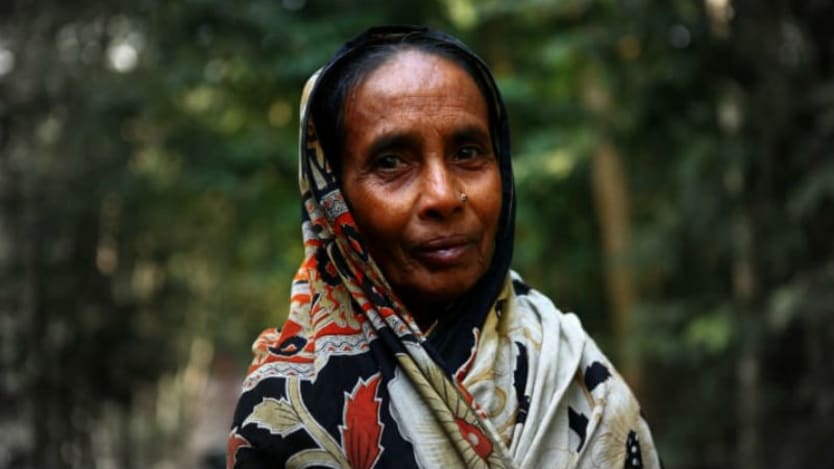
Measurements of empowerment — particularly women’s empowerment — are having a moment in the spotlight. Following the release of The Abdul Latif Jameel Poverty Action Lab’s “Practical Guide to Measuring Women’s and Girl’s Empowerment in Impact Evaluations,” even National Public Radio is discussing the limitations and challenges inherent in capturing this slippery, complex concept.
Why does this issue seem to resonate so much with the development community? If we believe “what gets measured, gets done” and that empowering marginalized populations is intrinsically and instrumentally important — then it is imperative that we get measures right. This means unpacking the complexities in a way they can be used even by those who do not consider themselves gender experts.
Empowerment is a challenge to measure, in part because of the seemingly infinite metrics used. Conceptually, most researchers and implementers agree that ultimately what we want to measure is something close to the concept of agency, defined by economist Amartya Sen in “Development as Freedom” as “people’s ability to use those capabilities and opportunities to expand the choices they have and to control their own destiny.”
However, measuring the expansion of agency, autonomy or power over, to and with, is not easy. Most research defaults to measuring either the enabling conditions — for example, access to information or resources — or the end result — for instance, social, or economic well-being outcomes. The field of economics has primarily focused on standardized intra-household decision-making indicators to measure bargaining power — a proxy for agency within the household that the J-PAL guide suggests is not cut out for the job.
The critiques of decision-making indicators are not new. And there are many. For example, we might worry they are not specific enough in the face of cultural differences, do not reveal true preferences of the individual when couples disagree, or are prone to social desirability bias. It is also unclear how we should construct indicators: are women — or men — more or less “empowered” if they make decisions alone? Or is joint decision-making preferred as a signal of a more equitable, inclusive, and communicative relationship?
In a new paper, we explore several measurement concepts around standard decision-making indicators using case studies from two distinct locales: Bangladesh and Ghana. In particular, we utilize a measure of relative autonomy — a construction used primarily in psychology that measures the extent to which actions are intrinsically or extrinsically motivated — to calibrate decision-making. We are interested in knowing whether men and women who report sole decision-making in a particular domain, experience stronger or weaker feelings of autonomous motivation, compared to those who report joint decision-making.
Our results in a nutshell? It depends on who you are asking, which decision is being made, and if couples agree on how decisions are made.
Here are a few takeaways:
1. Context matters
Stating the obvious, our results differ by country context. Whereas men and women in Bangladesh appeared to clearly differentiate between sole and joint decision-making — this was less so the case in Ghana. This pattern may be due to a number of factors, such as social norms around productive activities, social interactions, and family responsibilities.
Ultimately, differences in what particular activities and attributes are associated with autonomy and empowerment are likely to vary by context, including the geographic region, culture, urban or rural context, or the particular population being surveyed. Thus a clear implication is a need for investment into tailoring indicators to the survey setting — rather than assuming that domains important in one context are generalizable to another. There are a number of ways to achieve this, including formative research and working with local teams to define survey questions, among others.
2. Deciding on what?
The relationship between sole and joint decision-making and autonomous motivation depends on the type of decision being made. Productive decisions — such as crop choice, livestock rearing — are viewed differently than personal decisions — such as expression of religion and the use of family planning.
In Bangladesh, women related joint decision-making in productive domains with increased autonomy — more so than for sole decision-making — but on personal decisions, they linked joint decision-making to reduced autonomy. An obvious lesson for program evaluation is the necessity of asking questions specific to the domains a program is expected to change — and not simply on those domains that are typically thought to be under the control of men or women in a particular setting — such as food purchases and children’s health.
Further, using an aggregate indicator or index of decision-making can obscure important domain-specific differences. The J-PAL guide also has useful tips on tailoring questions to ask about specific instances in which a decision could be made — instead of relying on general questions which are open to interpretation by respondents.
3. Who is deciding, and who is being asked?
Results differed between men and women in each setting. In particular, men tended to associate sole decision-making more consistently with autonomy as compared to women. However, more interesting are men’s and women’s viewpoints on the decision-making process.
When we compare responses across domains, Ghanaian couples agree 67–82 percent of the time, whereas Bangladeshi couples agree 6–64 percent of the time. When couples disagreed, it tended to be the case that women reported decisions as being made jointly — while men reported making the same decision solely by themselves.
Particularly striking are decisions on the expression of religion and determination of daily tasks in Bangladesh, where more than 90 percent of couples gave conflicting responses for decision-making. One takeaway is that it is important not only to ask men and women separately about their own perceived autonomy but also to compare their responses to uncover interesting patterns that might lead to different conclusions surrounding intra-household dynamics. Couples who disagreed in our sample tended to have larger divergence in how they viewed sole and joint decisions in relation to autonomy.
This exploration does not tell us what indicators we should use in different contexts but rather suggests that we should be mindful of differences in individuals’ interpretation and motivation of decision-making. It is common in economics to treat sole and joint decision-making as equivalent — or to analyze only one.
A clear implication of our study is to reject this practice. It also suggests that innovative approaches, in particular, interdisciplinary explorations, can help us get closer to understanding what we are measuring and how to improve how we think about and implement standardized indicators. Our study provides one example of a survey-based approach for calibrating decision-making and autonomy — however, there are many other methods that can help researchers unpack these concepts, including qualitative and formative research. While many measurement efforts to capture more “holistic” indicators and indices of empowerment are underway, we can all do a little better in acknowledging the limitations in what standard decision-making is capturing.
We still have a long way to go as a field in understanding how to best measure these concepts in ways that are specific and sensitive to development interventions. Go forth and innovate!









